History of Novosibirsk
Foundation of Novosibirsk
Novosibirsk is a city with a very interesting history. Unlike many other cities in Russia, it does not have a specific founder. Since the 18th century, on the left bank of the Ob, one of the largest rivers in the world, there was the village of Krivoshchekovo, where migrants from the European provinces of the Russian Empire lived. However, it did not become the basis of Novosibirsk. The city was born on the other, right, bank of the Ob, when the Trans-Siberian Railway approached it in 1893.
Originally it was just a village for the builders of a railway bridge across the Ob. It could turn out to be temporary and disappear after the completion of construction, if not for the combination of several factors that contributed to the development of trade - a large river, a railway, a flat relief convenient for building. At first, the village was named Alexandrovsky, in honor of Emperor Alexander III. For the third anniversary, it received a new name and became Novonikolaevsky, in honor of the Emperor Nicholas II.
In 1897, the first trains went across the bridge. The settlement was quickly growing. By 1898, there were already 7.8 thousand people in the village. In 1903, when the village acquired the status of a town with the name Novonikolaevsk, its population was 26 thousand people. In the 1910s, Novonikolaevsk experienced a construction boom. By 1913, the population of the city was 86 thousand people.
Novonikolaevsk, was the center of the major lines of communication, in which the navigable Ob River crossed with the Great Siberian Way and the Altai Railway. The First World War turned the city into the largest center for training troops beyond the Urals.
More Historical Facts…
Novosibirsk - the Siberian Chicago
In 1921, Novonikolaevsk received the status of the administrative center of the Novonikolaevsk Governorate. In 1925, it became the administrative center of the huge Siberian Krai - practically all the regions of Trans-Ural Russia.
The capital of the new huge region needed a new name. Here are just some of the proposed names: Krasnograd, Sibleninsk, Krasnoobsk, Sibkraisk, Sibkraigrad, Leningrad-on-Ob. On February 12, 1926, Novonikolaevsk (“a new city of Nicholas”) was renamed Novosibirsk (“a new city in Siberia”. In 1926, at the Regional Scientific Congress, it was decided to turn Novosibirsk into a “promsad” (“industrial garden”) or “city-garden”. About 120 thousand people lived in the city at that time. The city got the nickname “Siberian Chicago”.
The main elements of the renovated Siberian capital were supposed to be “social towns” - complex residential areas at factories and plants. New cadres were needed to build a new society. Novosibirsk quickly became a city of students. In the 1930s, 8 universities and 10 technical schools were opened here. The city became the Trans-Ural capital of such an architectural style as constructivism.
On July 30, 1930, due to the division of the Siberian Krai, Novosibirsk became the center of the West Siberian Krai. In 1934, a new railway bridge was built across the Ob River and the population grew to 294 thousand people. By 1939, it increased up to 406 thousand people. On September 28, 1937, the West Siberian Krai was divided into Novosibirsk Oblast with the capital in Novosibirsk and Altai Krai.
During the Second World War, the enlistment offices of Novosibirsk Oblast sent more than half a million soldiers to the front. There were 115 evacuation hospitals in the region. Almost 27% of all shells fired by the Red Army during the war were produced in Novosibirsk. Despite the fact that not a single bomb fell on the territory of Novosibirsk, the pre-war city disappeared forever. Instead of the planned residential areas/parks, industrial zones of evacuated factories appeared, a lot of buildings changed their civilian purpose to military-industrial (some of them - forever).
The evacuation radically changed the demography of Novosibirsk - people evacuated from Moscow and Leningrad brought with them a new way of life, new artistic tastes. A lot of them stayed in Novosibirsk after the war. During the war years, Novosibirsk also became the center of the musical culture of Siberia. The Novosibirsk Opera and Ballet Theater, one of the main attractions of Novosibirsk, was opened on May 12, 1945.
Novosibirsk after the Second World War
The demographic inertia of the evacuation turned the pre-war Novosibirsk into a metropolis. By 1956, its population increased to 750 thousand people. On September 2, 1962, a millionth resident of the city was born. It took Novosibirsk only 70 years to achieve this status from the moment of its foundation, which made it the youngest of all million cities.
In 1950, the construction of the Novosibirsk hydroelectric power station began; a large reservoir was created, the so-called Ob Sea. The idea of creating a Siberian branch of the USSR Academy of Sciences in Novosibirsk was implemented in 1957. About 20 kilometers south of the center of Novosibirsk, in the middle of the forest, Akademgorodok was built - a town of scientists. In 1959, Novosibirsk State University was opened.
In 1979, construction of the metro began in Novosibirsk. Opened in 1985, it became the first one in the Trans-Ural part of Russia. Today, the Novosibirsk metro has 13 stations and annually carries about 70 million passengers.
In 1990, the bridge that had given rise to the city was reconstructed. To preserve the memory of the first builders, one of its span structures was installed on the embankment of the Ob in the park “Gorodskoye Nachalo”.
The transition to a market economy led to a sharp drop in production. High-tech industries, such as radioelectronics, microelectronics, instrument making, and aircraft construction suffered especially heavy losses. In 1991-1998, industrial production in Novosibirsk decreased by more than 3 times.
In the 1990s, the economic structure of the Novosibirsk region and Novosibirsk underwent fundamental changes. The main structural change was that the production of services in the city began to exceed the production of goods, the role of industry decreased, the share of transport, trade, communications, agriculture, and a lot of branches of market services increased.
Thus, the potential points of growth of Novosibirsk reproduced on a new historical, technological, and institutional basis the initial system of its development priorities: a large transport hub in the system of transnational transport corridors, a trade, intermediary, and financial center - the center of Siberia, a large business, scientific, educational, and cultural center.
In the 21st century, Novosibirsk became the first Russian city (after Moscow and St. Petersburg) to exceed the population of 1.5 million.
Architecture of Novosibirsk
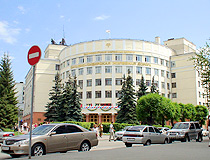
The building of the West-Siberian Railway in Novosibirsk
Author: Vytautas Podlesaitis
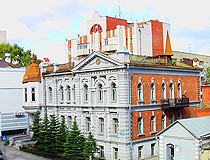
Old building in Novosibirsk
Author: Andrey Osokin
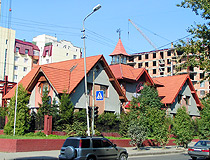
On the street in Novosibirsk
Author: Serge Klimenko
Novosibirsk - Features
Novosibirsk is the most populous city in the Asian part of Russia. It is located in the southeastern part of the West Siberian Plain on both banks of the Ob River next to the Novosibirsk reservoir. The width of the Ob River within the city is 750-850 meters. The City Day of Novosibirsk is celebrated on the last Sunday of June.
The city is located in the continental climatic zone. The flatness of the territory allows both cold waves from the north and heat waves from the southwest to freely spread. That’s why both severe frosts and short-term thaws can be observed in winter. The duration of winter is 120-130 days, summer - about 90 days. The average air temperature in January is minus 16.5 degrees Celsius, in July - plus 19.4 degrees Celsius.
On the coat of arms of Novosibirsk you can see a schematic image of the Ob River and the bridge across it, part of the Trans-Siberian Railway, which gave rise to the city.
The economy of Novosibirsk is based on industry, trade, transport, science, and scientific services. The city is successfully developing in the absence of large resource-extracting enterprises in the region, which distinguishes it from most large cities in Siberia.
The main activities of industrial production are: production of food, computers, electronic and optical products, chemicals, vehicles and equipment, metallurgy, beverage production. Novosibirsk is one of the leading suppliers of nuclear fuel for nuclear power plants and research reactors in Russia and abroad.
Novosibirsk is the largest scientific center in the Asian part of Russia. More than 100 organizations carry out research and development in this city. There are about three dozen higher educational institutions here.
It is the largest transport hub in Siberia connecting Siberia, the Far East, Central Asia with the European regions of Russia. Novosibirsk is also a river port. The city is served by Tolmachevo International Airport, the largest in terms of passenger traffic in the Asian part of Russia. The airport is located at the intersection of a large number of flights from Southeast Asia to Europe and from North America to India and Asia.
Novosibirsk was the only city in Russia located in two time zones. Since its foundation, it was growing in two parts along different banks of the Ob. And since the meridian of the hour passed right along the Ob River, there were two time zones in one city. On the left bank, the difference with Moscow was 3 hours, and on the right bank - 4 hours. At first, this did not cause much inconvenience as each half lived quite apart. In 1955, when the first road bridge across the Ob was built, the city became more connected. In 1958, Novosibirsk switched to a single time zone.
Despite its young age, Novosibirsk has 145 monuments of architecture, history, monumental art and archeology taken under state protection. 47 monuments of wooden architecture of the late 19th - early 20th centuries are of particular value. There are also over a dozen different museums in Novosibirsk.
Main Attractions of Novosibirsk
Novosibirsk Zoo - one of the largest and best zoos in Russia, where about 11,000 animals, birds, and reptiles of 770 species are kept on an area of 63 hectares in a pristine pine forest. More than 350 species are listed in the International Red Book. This zoo is visited by about one million people every year. It also hosts ecological events and festivals. Timiryazeva Street, 71/1.
Novosibirsk Theater of Opera and Ballet. Founded in 1945, it is one of the leading theaters in Russia. It occupies the largest theater building in Russia constructed in the constructivist style in 1931-1941. This unique architectural complex has the status of a cultural heritage of the Russian Federation. It is one of the symbols of Novosibirsk and probably its most recognizable building.
The main feature of the building is its huge dome with a diameter of 60 meters and a height of 35 meters. The large hall of the theater can accommodate 1,449 spectators. The theater is located on Lenin Square - the main square of Novosibirsk, where you can also find a number of interesting monuments. This theater is also known as the “Siberian Colosseum”. Krasnyy Prospekt, 36.
Novosibirsk Museum of Local Lore - one of the main museums in Novosibirsk. The historical department of the museum is located in a picturesque building of the former City Trade House (a monument of history and architecture of federal significance built in 1910).
This museum has a number of unique exhibits: a complete mammoth skeleton, collections of household and religious items of Siberian peoples collected by expeditions in the 1920s-1930s. There are also collections of numismatics, woodwork, glass, porcelain and faience, an archaeological collection, etc. Krasnyy Prospekt, 23.
Novosibirsk Art Museum. The permanent exhibition presents the following sections: icons (old Russian art), foreign art (works of Italian, French, Flemish, Dutch, Belgian, German masters), Russian art of the 18th-19th centuries (works by I. Shishkin, A. Kuindzhi, I. Repin , V. Surikov, and others), Russian art of the early 20th century, art of the Soviet period, Russian art of the late 20th century. There is a separate section devoted to the works of N. Roerich. Krasnyy Prospekt, 5.
Novosibirsk Museum of Railway Technology. This museum has a large collection of steam, diesel, and electric locomotives, carriages, which mainly operated on the railways of Western Siberia. In addition, you can see such Soviet cars as GAZ, Moskvich, ZAZ of different years of production, as well as several trucks, tractors, and all-terrain vehicles. The total length of the exhibition grounds is about 3 kilometers. It is the largest museum of this subject beyond the Urals with over 100 exhibits. Razyezdnaya Street, 54/1.
Alexander Nevsky Cathedral (1897-1899). Built of red brick in the neo-Byzantine style, this is one of the first stone buildings on the territory of Novosibirsk and the most beautiful church in the city. Krasnyy Prospekt, 1A.
Monument to the Laboratory Mouse. This unusual monument is located in a public garden near the Institute of Cytology and Genetics of the Siberian Branch of the Russian Academy of Sciences on the territory of Akademgorodok. The mouse with glasses holds the knitting needles in its paws and knits a double helix of DNA.
The monument symbolizes gratitude to this animal for the fact that mankind has the opportunity to use mice to study animal genes, molecular and physical mechanisms of diseases, and the development of new drugs. Akademika Lavrent’yeva Prospekt, 10/2.
Zaeltsovsky Park - one of the oldest parks in Novosibirsk that celebrated its 85th anniversary in 2017. The park has all the conditions for a comfortable and cultural pastime: walking paved paths, rides, summer verandas and gazebos, a paintball club, an ice rink, a rope park, etc.
For history buffs, the ethnopark “Territory of Siberia” has been created, where everyone can get acquainted in detail with the culture of the indigenous peoples who lived in these places several hundred years ago. In winter, it is a great place to go skiing. There is also a children’s railway with a length of 5.3 km here. At the terminal station, you will be offered to go to the Novosibirsk Zoo, which is located nearby.
Novosibirsk Central Park - a large park in the center of Novosibirsk and the oldest park in the city. On an area of 10.5 hectares, there are summer cafes and ice cream kiosks, dozens of rides and sports equipment rental points. There is an open-air skating rink in winter. The park often hosts festivals, concerts, and tournaments. The Novosibirsk Theater of Musical Comedy is also located here. Michurina Street, 8.
The Ob River and “the Ob Sea”. The Ob is one of the world’s largest rivers, its length is more than 3,600 km. This river flows through a lot of Siberian cities. Within Novosibirsk, the river is transformed into a large reservoir, which bears the unofficial name “the Ob Sea”. The main purpose of the water reservoir is to generate electricity. Also, the shores of the “sea” are a popular recreation area for locals and city visitors.



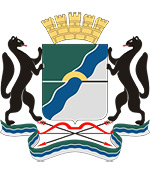
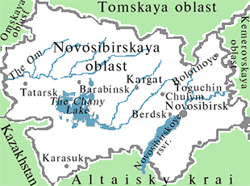



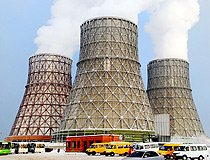
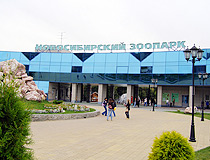
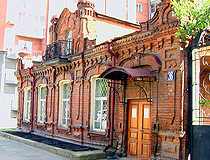
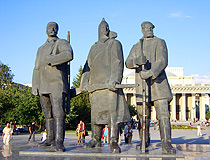
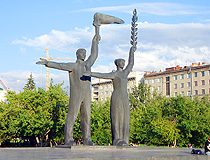
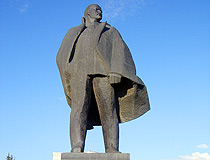
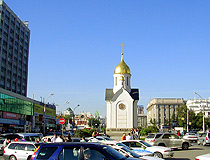
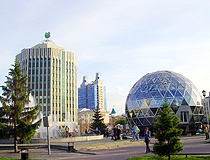
The comments of our visitors
All 7 comments